This article shares nine strategies designed specifically for parents of non-verbal children with autism, all aimed at enhancing communication and social skills. These strategies include the use of visual supports, social stories, structured routines, and sensory activities. They are all backed by research and expert recommendations, highlighting their effectiveness in fostering development and improving interactions for children who cannot talk.
Let’s explore these strategies together! Each one offers a unique way to support your child’s growth and connection with others. By incorporating visual aids, for example, you can create a more engaging environment that helps your child express themselves better.
Remember, you’re not alone in this journey. Many parents have found success by implementing these approaches, and we’re here to help you every step of the way! So, let’s dive in and see how these strategies can make a difference in your child’s life.
Navigating the world of autism can be a profound challenge, especially for parents of non-verbal children. With about 35% of individuals on the spectrum unable to communicate verbally, it's crucial to find effective strategies. This article explores nine essential techniques to empower parents, offering insights into personalized support, communication tools, and social skills development.
How can caregivers effectively bridge the gap between their child's needs and the available tools? It’s all about ensuring that your little ones thrive in a world that often feels overwhelming. Let’s explore this together!
At Rori Behavioral Innovations Inc., we understand that every child is unique, particularly those who are non-verbal, as autism can't talk. That’s why we specialize in personalized ABA therapy tailored just for them! By conducting thorough assessments, our caring clinicians craft individualized treatment plans that focus on enhancing interpersonal skills, social interactions, and overall independence.
This personalized support not only empowers your child but also helps families navigate the challenges they face. We’re here to ensure that each young individual’s specific needs are met, creating a nurturing environment where they can truly thrive. Let’s explore this journey together and foster growth and development for your loved ones!
Visual aids, like picture schedules, emotion cards, and visual timers, are super helpful for enhancing communication with non-verbal individuals. These tools provide clear representations of concepts, making it easier for young ones to understand and express their feelings or needs. For instance, parents can create visual tools that show daily routines or specific tasks. This not only helps kids anticipate what’s coming next but also eases the anxiety that often comes with transitions by providing a sense of predictability.
Did you know that about 35% of individuals with autism can't talk, being non-verbal or minimally verbal? This really highlights the importance of having effective communication strategies in place. By using visual supports, parents can create a more predictable environment, which empowers their children to navigate daily life with more confidence and independence.
Regular evaluations during ABA therapy can help monitor how well these visual aids are working, ensuring they meet each participant's unique needs. Plus, integrating technology into these supports can make them even more effective. At Rori Behavioral Innovations Inc., our mission is to provide personalized care and support, and we’re here to help you every step of the way! Let’s explore this together!
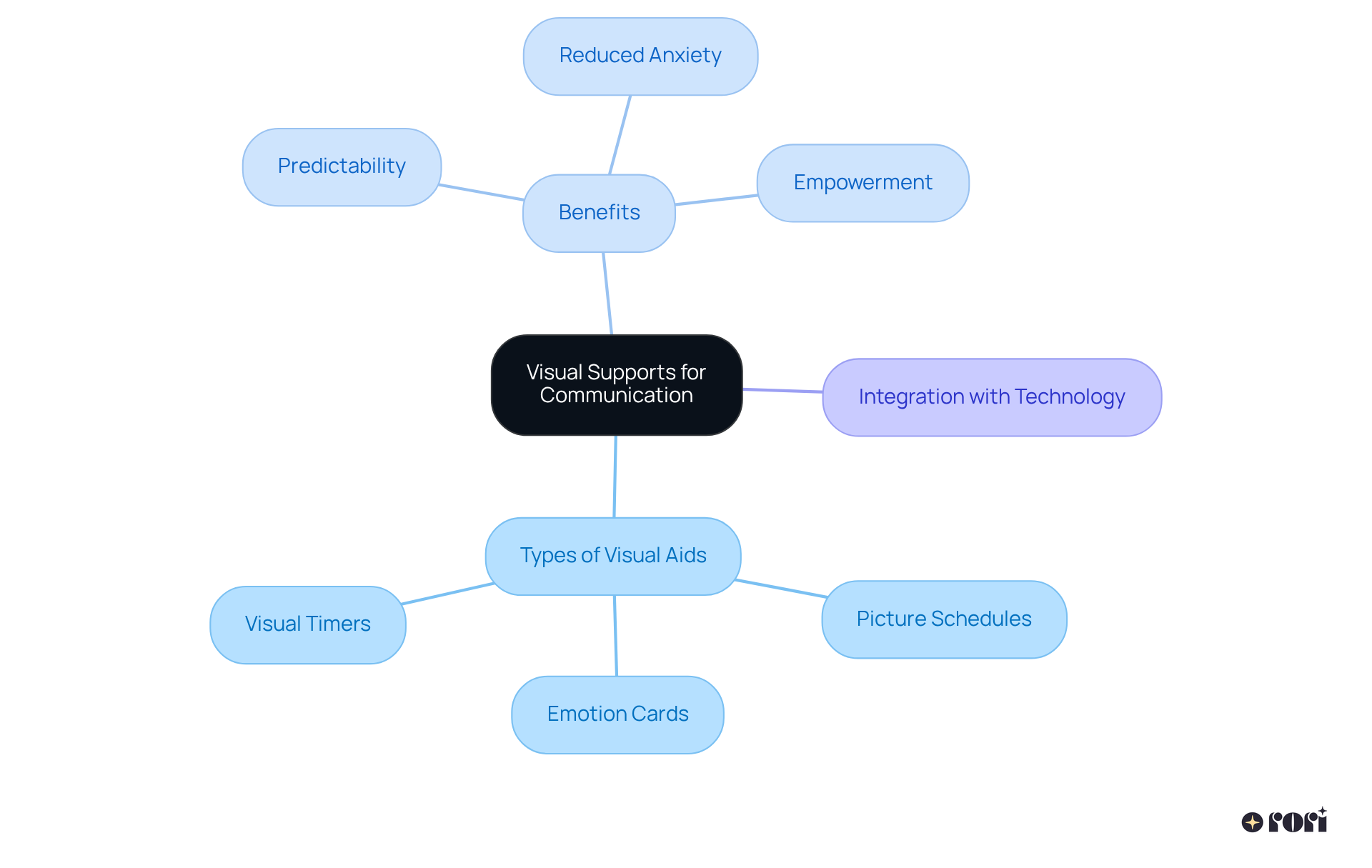
Personalized stories are like special narratives designed to help kids navigate social situations and understand the right responses. By showcasing relatable scenarios—such as sharing toys or saying hello to friends—these stories prepare little ones for real-life interactions. Did you know that one in 59 kids is diagnosed with Autism Spectrum Disorder (ASD)? This highlights the importance of effective strategies like narrative stories. Research shows that kids using these storytelling techniques have better social interactions and fewer challenging behaviors. For instance, 'talk outs' dropped from an average of 11.2 to just 2.3 per 30 minutes during interventions!
Parents can create simple, relatable stories that mirror their child’s experiences, reinforcing positive behaviors and social skills in a loving environment. As Carol Gray, the creator of narrative tools, says, "Narrative tools serve as a crucial element of autism assistance, providing customized, visual, and interactive methods to teach interpersonal skills, alleviate anxiety, and encourage independence." This approach not only fosters understanding but also boosts confidence, making social interactions feel more manageable for kids, especially those with autism who can't talk.
It’s really important to share these social narratives during calm moments to avoid overwhelming your child. This way, they can engage with the content meaningfully. Let’s explore this together and see how storytelling can make a difference in your child’s life!
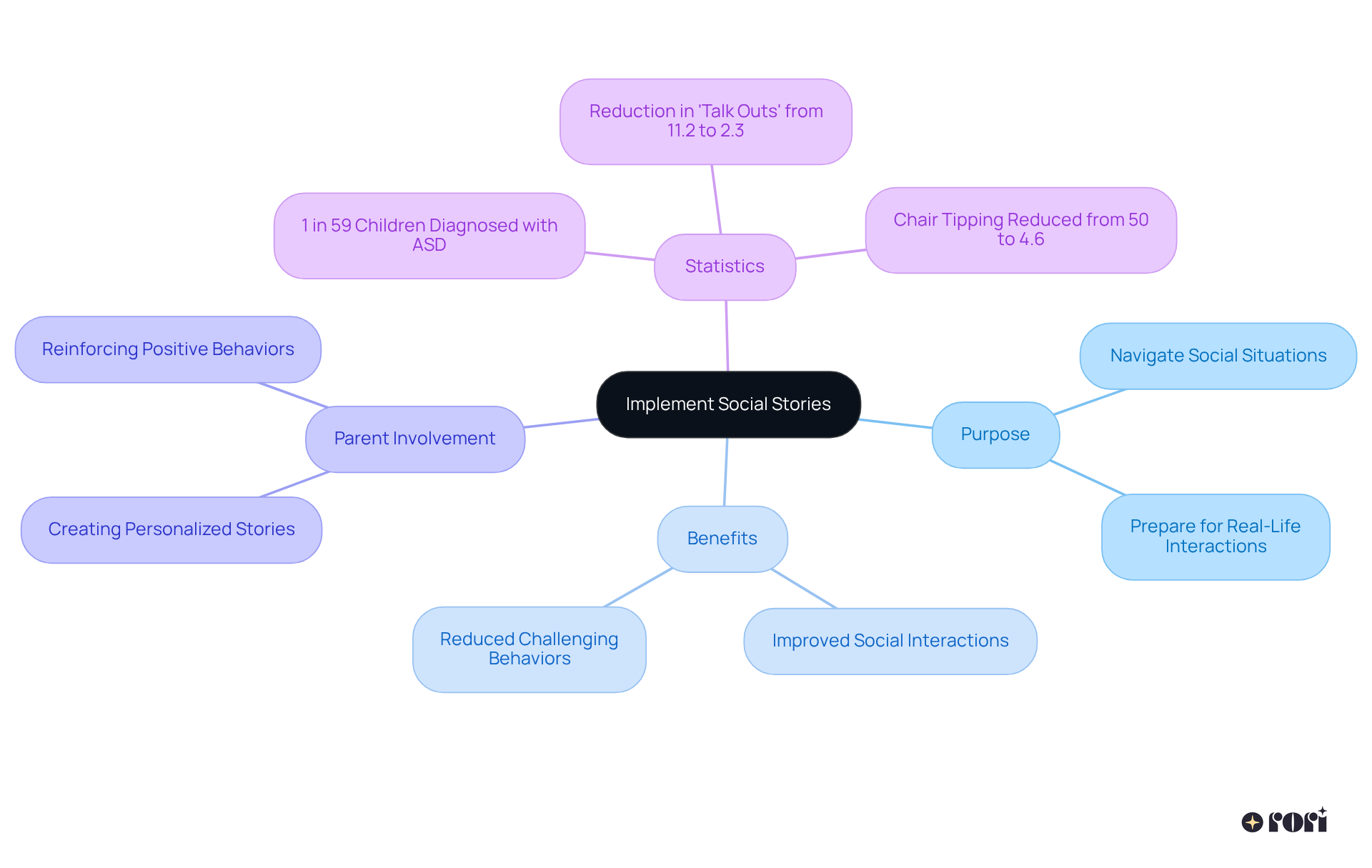
Creating organized routines is so important for our non-verbal kiddos, especially since autism can't talk! It gives them a reliable framework for their daily activities. By sticking to consistent schedules for meals, playtime, and therapy sessions, you can help your little ones know what to expect next. This predictability not only eases anxiety but also boosts emotional regulation, giving them a sense of control and stability—how comforting is that? It helps them feel more secure in their surroundings.
Research shows that predictable routines can really enhance communication skills and promote independence, particularly for those with autism who can't talk. Kids who engage in familiar activities within structured routines often show better focus and concentration. They can really dive into their tasks without the stress of uncertainty weighing them down. Ultimately, these routines act as a solid anchor, providing stability and helping to reduce those emotional meltdowns during transitions.
So, how can you implement organized routines effectively? A great starting point is to create a visual timetable that outlines daily activities. This little tool can really help your kids understand what to expect throughout the day. Let’s explore this together! Your journey towards creating a supportive routine can make a world of difference for your child.

Incorporating play-based education into everyday practices is so important for helping non-verbal youth enhance their interaction abilities. Activities like role-playing, interactive games, and sensory play not only encourage kids to express their needs and emotions but also create a supportive atmosphere for developing those essential interaction skills. As Loris Malaguzzi beautifully said, "The young one has a hundred languages, a hundred hands, a hundred thoughts, a hundred ways of thinking, of playing, of speaking," highlighting how play can be such a rich avenue for expression.
For instance, role-playing can help youngsters practice social interactions in a safe environment, while interactive games promote turn-taking and sharing—two crucial elements of effective communication. Parents can select toys and games designed to spark conversation and interaction, turning playtime into valuable opportunities for their kids to improve their self-expression. Plus, incorporating sensory play can enhance these experiences even further, allowing young ones to explore and express themselves in so many different ways.
Educators emphasize that play is foundational for learning, making it a powerful tool in nurturing expressive skills, particularly for youngsters with autism who can't talk. To get started, why not set aside some time each day for a fun play activity? A simple turn-taking game can really motivate your little ones to communicate and interact with others. Let’s explore this together and see how play can make a difference!
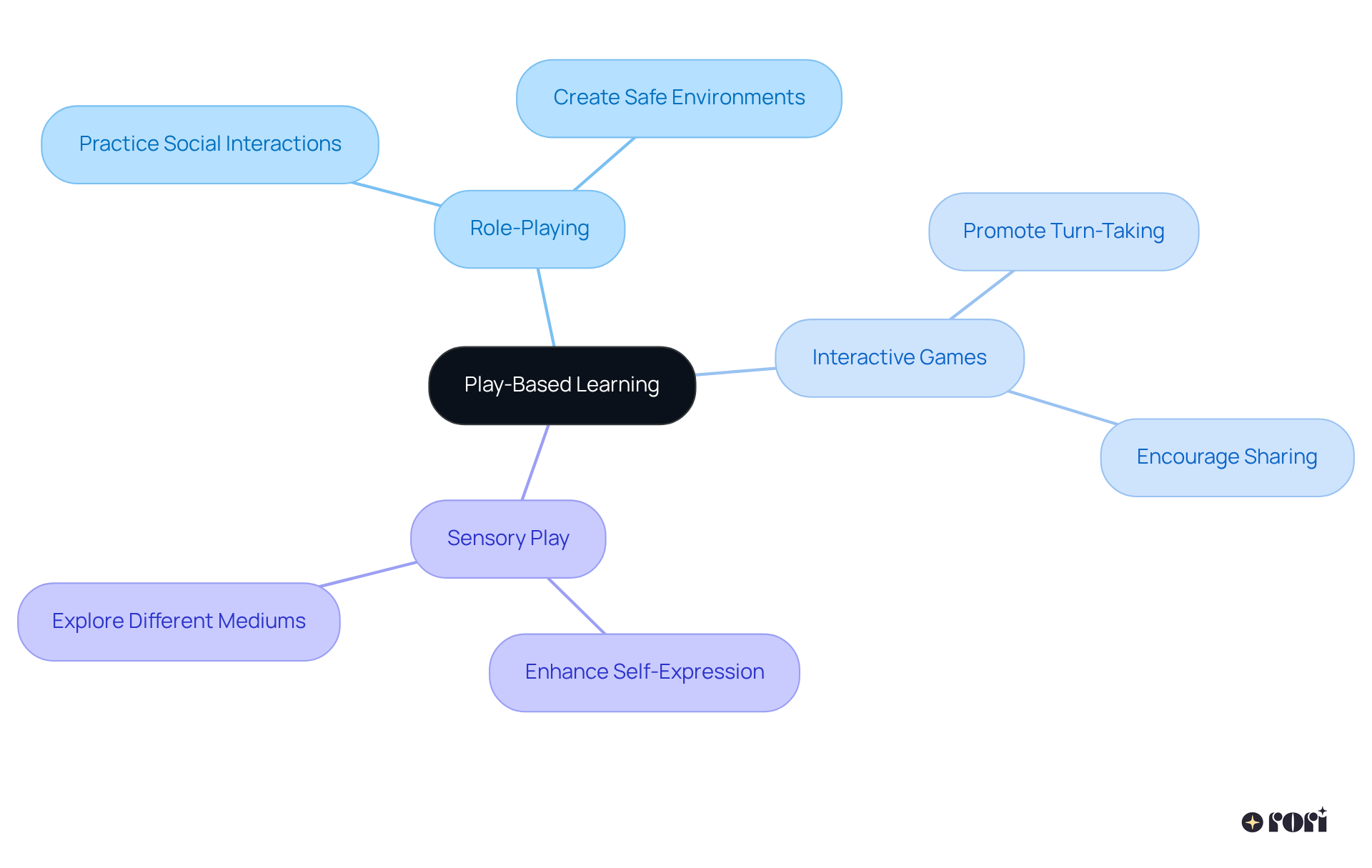
Assistive technology, like speech-generating devices and interactive apps, plays a crucial role in helping non-verbal youth express themselves. These innovative tools empower young individuals to share their thoughts and needs through symbols, pictures, or synthesized speech, enhancing their ability to connect with others. Research shows that early intervention with such technologies can lead to significant improvements in interaction skills, fostering greater social engagement and emotional expression.
Parents are encouraged to explore various options to find the best fit for their child's unique way of communicating. For instance, studies suggest that speech-generating devices can boost both expressive and receptive language skills, enabling kids to articulate their needs more clearly. Plus, messaging apps have proven effective in enhancing participation and interaction, making it easier for non-verbal youngsters to join conversations and community activities.
Experts highlight the importance of weaving these technologies into daily life. Consistent use can lead to even greater communication gains! By embracing assistive technology, families can create nurturing environments that support growth and development, helping their kids thrive in community settings. Early intervention is especially crucial, as it can greatly improve the overall development and quality of life for individuals with autism, particularly when autism can't talk. With speech therapy costs typically ranging from $100 to $250 per hour, it’s essential for families to carefully consider their options.
Let’s explore this together! By taking these steps, you can help your child flourish and engage meaningfully with the world around them.
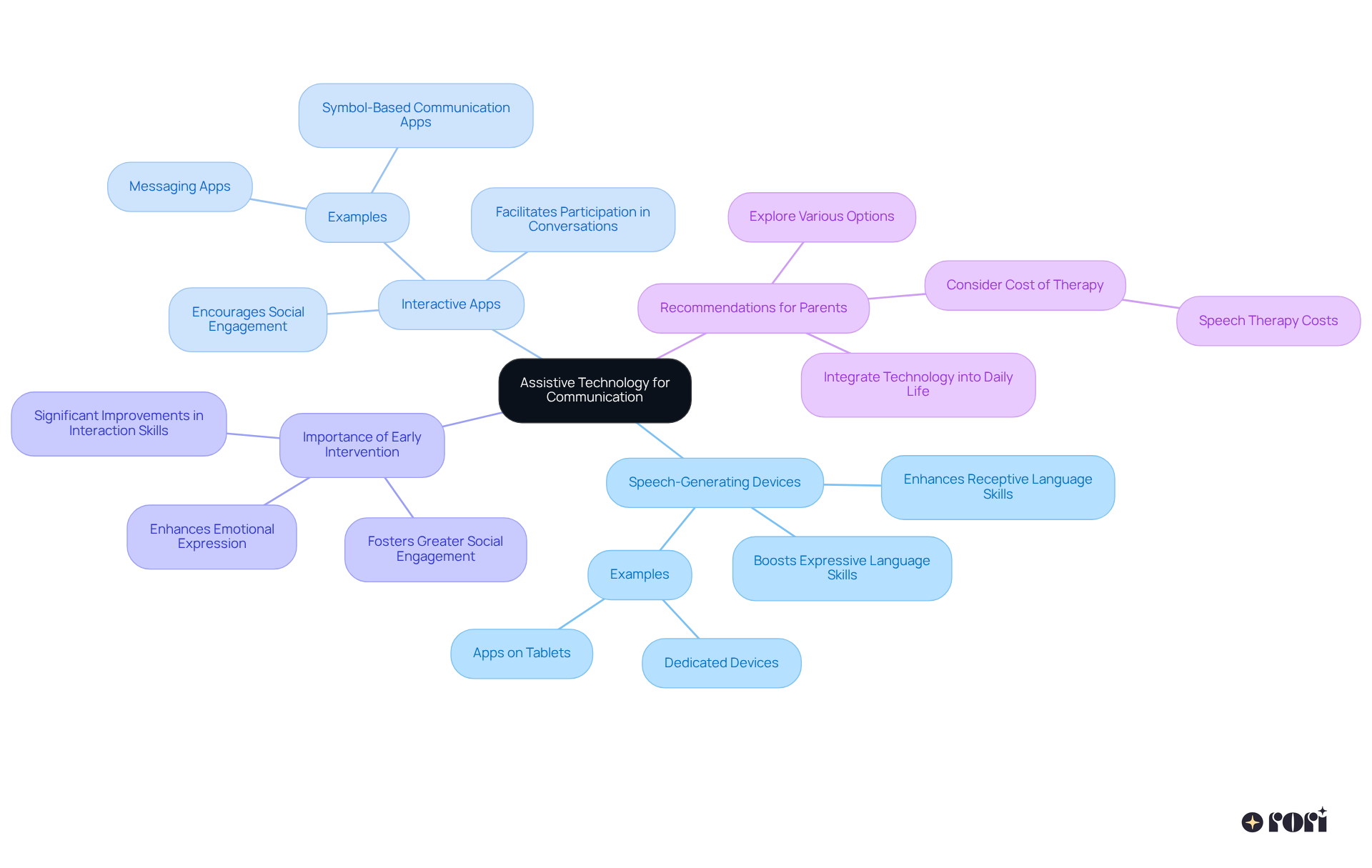
Encouraging peer interactions is so important for helping youngsters with autism can't talk improve their interpersonal skills. By arranging playdates or group activities, these kids can engage in interactive settings where they can practice communication skills in a nurturing environment. Research shows that structured play experiences can significantly boost social understanding and peer engagement, fostering essential skills like sharing and turn-taking.
However, it’s crucial to recognize that some autistic individuals and teenagers may feel confused, tired, stressed, or overwhelmed by socializing, particularly because autism can't talk. This highlights the need for careful planning in these interactions. Educating neurotypical peers about autism and effective ways to engage with non-verbal individuals can foster empathy and acceptance, creating a more inclusive atmosphere.
Trainers of interpersonal skills emphasize the value of organized activities during playdates, as they provide clear expectations and opportunities for kids to learn social norms. Participating in role-playing and imaginative play can also help boost confidence and skills in young autistic individuals.
Recently, there has been a focus on peer mentoring programs in schools, pairing autistic individuals with neurotypical peers to enhance interactions and communication abilities. It’s essential to provide training and guidance for peer mentors so they can effectively support their autistic friends in social settings. By creating these supportive environments, parents can help their children build meaningful relationships and improve their overall social competence. Let’s explore this together!

Educating parents and caregivers on effective interaction techniques is crucial for the growth of non-verbal individuals, particularly because autism can't talk. 🌟 Studies show that workshops focused on interaction methods can really boost caregivers' skills, helping them meet their children's needs more effectively. Techniques like modeling language, using visual supports, and encouraging non-verbal interaction are especially powerful.
Did you know that 90% of individuals make significant progress when the recommended hours of Applied Behavior Analysis therapy are fully implemented with active caregiver involvement? This highlights just how crucial caregiver training is! By equipping caregivers with these techniques, they can create an environment that nurtures their child's expressive development, particularly for children with autism can't talk, leading to better interactions and developmental outcomes.
Positive affirmations and encouraging quotes from autism experts—like 'Autism is not a tragedy; ignorance is'—can really inspire caregivers. It emphasizes how vital their role is in their loved one's journey. Additionally, recognizing the emotional challenges caregivers face and understanding the importance of early emotional experiences in youth development can provide a deeper context for these communication strategies.
Let’s explore this together! We’re here to help you every step of the way! 😊

Incorporating sensory activities into daily routines can really boost expression and engagement for our non-verbal kiddos, especially since autism can't talk. Think about activities like:
They let young ones interact with their surroundings in meaningful ways. Research shows that these experiences not only help kids express their preferences and emotions but also strengthen their connection with their environment and caregivers.
Occupational therapists emphasize that sensory play is crucial for developing communication skills, particularly for children with autism can't talk, as it provides them the tools they need to express themselves without words. By encouraging sensory exploration, parents can create wonderful opportunities for their children to engage more fully with the world around them. This ultimately supports their emotional and social growth. Let’s explore this together!
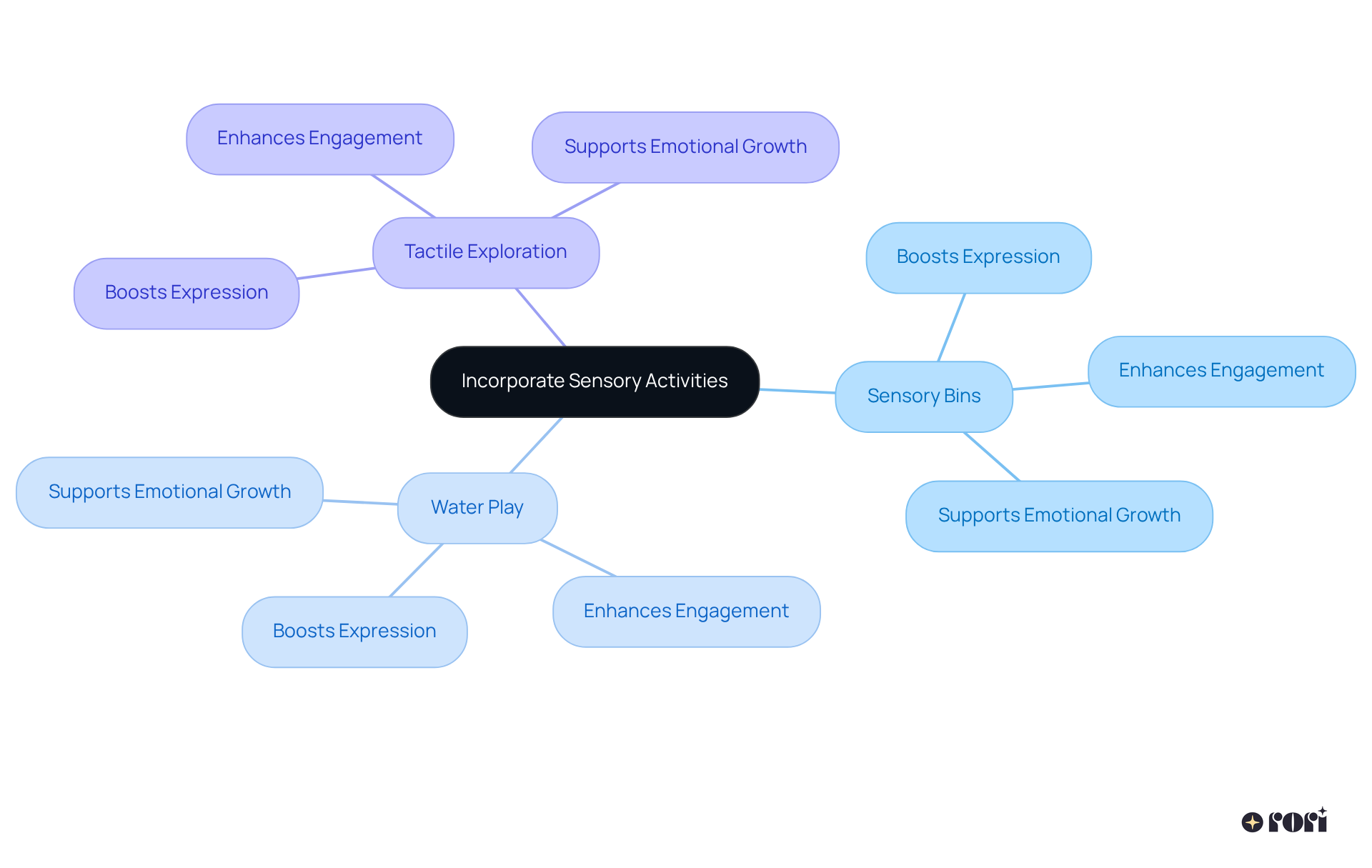
Every child with autism is unique, and for those who are non-verbal, finding effective communication strategies is essential. In this article, we share nine key strategies that parents can utilize to support their non-verbal children, highlighting the importance of personalized approaches tailored to each child's needs. By implementing these strategies, parents can create an environment that fosters communication, understanding, and social interaction, ultimately empowering their children to thrive.
We explore various techniques, such as:
Each strategy serves a specific purpose, from enhancing comprehension and expression to providing predictability and security. Plus, encouraging peer interactions and training caregivers are crucial components in building a supportive community around non-verbal children with autism. These insights remind us of the significance of collaboration among parents, educators, and therapists in nurturing essential communication skills.
Ultimately, the journey of supporting a non-verbal child with autism is filled with challenges, but it also offers opportunities for growth and connection. By embracing these strategies, parents can foster a nurturing environment that not only enhances their child's ability to communicate but also enriches their overall quality of life. Taking proactive steps today can lead to meaningful progress tomorrow, creating a brighter future for non-verbal children and their families. Let’s explore this together!
What is Rori Care's approach to ABA therapy for non-verbal children?
Rori Care specializes in personalized ABA therapy tailored for non-verbal children. They conduct thorough assessments to create individualized treatment plans that focus on enhancing interpersonal skills, social interactions, and overall independence.
How does Rori Care support families of non-verbal children?
Rori Care provides personalized support that empowers children and helps families navigate the challenges they face, ensuring that each child's specific needs are met in a nurturing environment.
What are visual supports and how do they help non-verbal individuals?
Visual supports are tools like picture schedules, emotion cards, and visual timers that enhance communication for non-verbal individuals. They provide clear representations of concepts, helping children understand and express their feelings or needs, and create a predictable environment.
Why is it important to use visual aids for children with autism?
About 35% of individuals with autism are non-verbal or minimally verbal, highlighting the need for effective communication strategies. Visual aids empower children to navigate daily life with more confidence and independence by reducing anxiety associated with transitions.
How can parents monitor the effectiveness of visual aids during ABA therapy?
Regular evaluations during ABA therapy can help monitor how well the visual aids are working, ensuring they meet each participant's unique needs.
What are social stories and how do they benefit children with autism?
Social stories are personalized narratives designed to help children navigate social situations and understand appropriate responses. They prepare children for real-life interactions and have been shown to improve social skills and reduce challenging behaviors.
How can parents create effective social stories for their children?
Parents can create simple, relatable stories that mirror their child's experiences, reinforcing positive behaviors and social skills in a loving environment. It’s important to share these stories during calm moments to avoid overwhelming the child.
What impact do narrative tools have on children with autism?
Narrative tools serve as crucial elements of autism assistance by providing customized, visual, and interactive methods to teach interpersonal skills, alleviate anxiety, and encourage independence, ultimately boosting confidence in social interactions.